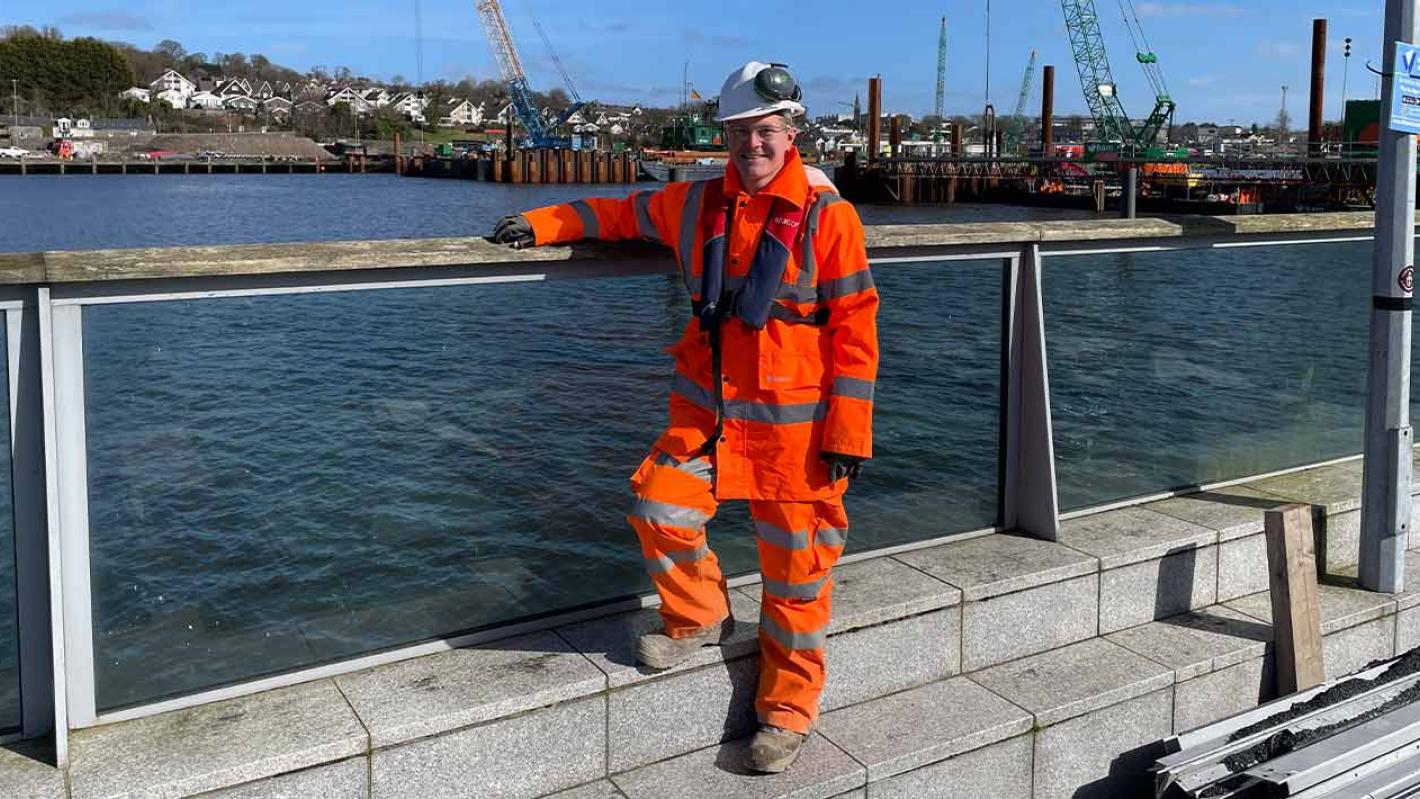
Graduate Engineer, Oliver Scales, pictured on the Waterford City Public Infrastructure project site in March 2024.
Oliver Scales draws on his experience as an assistant resident engineer on Ireland's largest urban regeneration project to explain why site work is important to a young engineer
When Oliver Scales was offered the opportunity to join the project team on the Waterford City Public Infrastructure Project, he did not need to be asked twice. “All young engineers at Roughan & O'Donovan (ROD) are encouraged to take on a site role during the graduate programme because seeing a piece of infrastructure being built from the ground up – rather than as a drawing or a set of calculations - goes a long way to developing a well-rounded engineer.”
The Waterford City Public Infrastructure Project is Ireland’s largest urban regeneration project. It comprises a major multimodal, sustainable transport interchange hub; a 207m long pedestrian and cycle bridge across the River Suir (the Sustainable Transport Bridge); 1.3km of urban dual carriageway and local road upgrades; 1km of flood defences; and a large public plaza.
For any young engineer not long out of university, the role of assistant resident engineer on such a complex scheme would have been a big undertaking, but not for Oliver. He was confident the experience he had accrued during his first two years with ROD would stand to him. “I learned a lot during my time with the highways, bridges and water teams in the Leeds office, and I was ready for the challenge.”
Oliver was tasked with maintaining a clear view of progress on three core elements of the project: the access infrastructure scheme, the sustainable transport bridge and the transport interchange hub. His primary duties focused on keeping track of the work onsite, including the labour and plant required to fulfil each activity. This involved taking over 7500 photos of the works and summarising this information in a series of weekly reports.
Oliver was also involved in reviewing the contractor’s programme, including comparing the as-built dates against the programme dates, as well as ensuring that the contractor carried out all the inspections and testing specified in the contract. “From time to time, I walked parts of the site with the client, answering their questions on the work being carried out. This was something I enjoyed because it helped me to see the project from their unique perspective.”
Working on the Sustainable Transport Bridge gave Oliver the opportunity to see a bridge being built from the very early stages, literally coming up out of the river, and exposure to elements of a bridge scheme that were relatively new to him, including piling and cofferdams.
But the biggest revelation was the constructability aspect of the project. “I always had a keen interest in bridges, but I never fully considered how bridges were constructed - my thinking was limited more to the design calculations. Going forward, I will be spending a lot more time asking myself whether it is feasible to build a bridge in a certain way or if it can be safely built.”
The transport interchange hub gave Oliver his first taste of working with on a building project and he saw first-hand the different challenges involved in managing the delivery of a two-story building scheme incorporating a bus-set down area and short-term parking facilities.
The access infrastructure scheme helped Oliver to appreciate the unique, technical challenges that smaller structures can present for engineers and why such structures need to be treated with the same level of respect as high-profile, statement bridges.
He also learned more about highways, something he was keen develop as he had no experience in the area before joining the company. “Spending time onsite gives you a much deeper appreciation for the different elements of highway design, including drainage and ducting, road pavements and earthworks, more than you could ever hope to get in a design office.”
When he joined ROD, Oliver's engineering knowledge was largely limited to the structural design calculations he had learned about at university. He has since been able to apply this knowledge to real-life projects, while learning about the design of highways, how multidisciplinary teams operate, and how contract documents are put together and their implications on site.
Now, as he nears the end of his seven-month site rotation in Waterford, Oliver is already thinking of the next step in his career: becoming chartered. “I have gained a lot of experience in my short time with ROD – both in the design office and on site – and I want to keep pushing forward. My colleagues in Leeds are very supportive, and I know they will be keen to ensure my career stays on track when I return to the office next month as part of the bridges team.”
